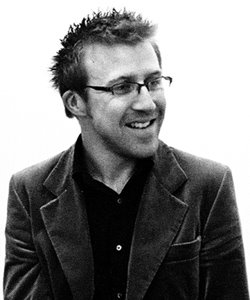
The Performance Re-enactment Society
Arnolfini 2 December 2007
Performance's only life is in the present. Performance cannot be saved, recorded, documented, or otherwise participate in the circulation of representations of representations: once it does so it becomes something other than performance. [Phelan, P. 1993: 146]
Peggy Phelan has written much about the temporality of performance. She enters into a discourse with Derrida who claimed ‘The theatre is born of its own disappearance.’ It was with this thought in mind and some trepidation that I entered the Arnolfini to attend The Performance Re-enactment Society. The aim was to reenact our performance memories and accession them to the Arnolfini’s Live Art Archive.
We sign away our memory with archivists at the doorway. We dress up to re-enact our performance memory for a photograph. We visit a Doctor on a chat show sofa who asks for more information about our memory. We walk away with a sticker and a polaroid of the performance re-enactment in a sealed envelope. We help ourselves to a cup of tea and a biscuit. The bureaucracy of performance re-enactment sits somewhere between donating blood and a REACTOR experience.
In Hill and Paris’s recent Performance and Place, Leslie Hill bemoans the fact that there is no ‘Live Art Louvre’ she can visit to see Carolee Schneeman’s Interior Scroll. And yet here I am watching Arnolfini Programmer, Helen Cole (who writes beautifully in the same publication about live art leaking from buildings) re-enacting Yoko Ono’s Cut piece with a man who had witnessed a restaging of the original. A re-enactment of a re-enactment. Here I am witnessing the recreation of a Derek Jarman installation at the National Review of Live Art in 1989 and leafing through the NRLA brochure from the same year with white gloves on. Here I am recreating Chris Burden’s Shoot with a man I’ve just met shooting me in the arm with a cardboard rifle and a blob of ketchup for the blood. I think I have found the Live Art Louvre. In the end we have our own Mona Lisa as a member of the audience disrobes to recreate a memory of Forced Entertainment nudity. Perhaps no Live Art Louvre would be complete without a naked woman – with or without her interior scroll.
The denouement of the event is Tom Marshman’s poetic text delivered from the aluminium surface of the Arnolfini bar. He has collated data from our memories – fusing his father's recollections of riots at a Little Richard gig with Lady Diana’s death. The Spaghetti Club has given us closure by opening an archive of words and images of which we are all the architects. If performance’s life is only in the present then perhaps we have re-presented this present to create new palimpsests of our memories. I think of our Shoot as Re-shoot and Cole’s Cut as Re-Cut. This event is the hyphen between re and enactment as we participate in the circulation of re-enactments of re-enactments taking place today.
In conclusion it is no coincidence that I slip from past to present tense. In order to capture the ghosts of performances being brought back to life I start this blog at the event. However, re-enactment is more interesting than documentation of re-enactment so I am compelled to engage more with the live than the blog. I have the experience of subjectivity Phelan cites in response to Derrida’s claim of performance's disappearance:
Writing towards preservation, must remember that the after-effect of disappearance is the experience of subjectivity itself [Phelan, P. 1993: 148]
Bibliography
DERRIDA, J., 2005, Writing and Difference, New York: Routledge
HILL, L. and PARIS, H. eds., 2006, Performance and Place. Basingstoke: Palgrave Macmillan
PHELAN, P., 1993. Unmarked: The Politics of Performance, Routledge: London and New York
REACTOR, Nottingham-based artists collective. http://www.reactorweb.com/homepage.htm


